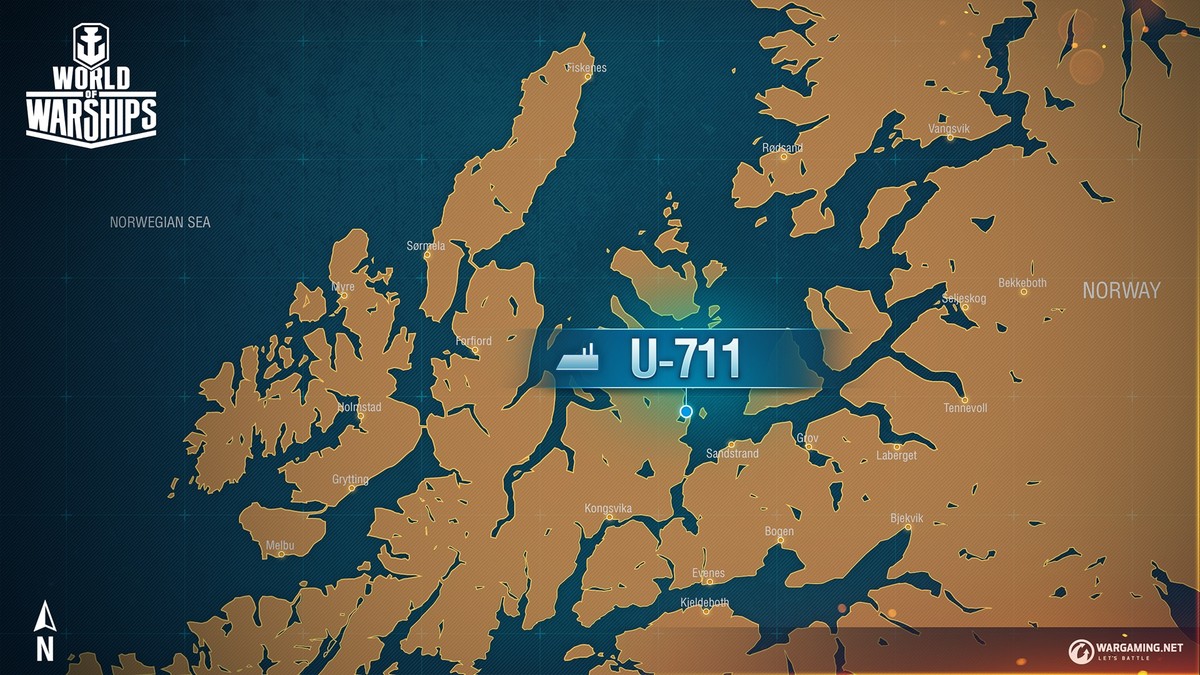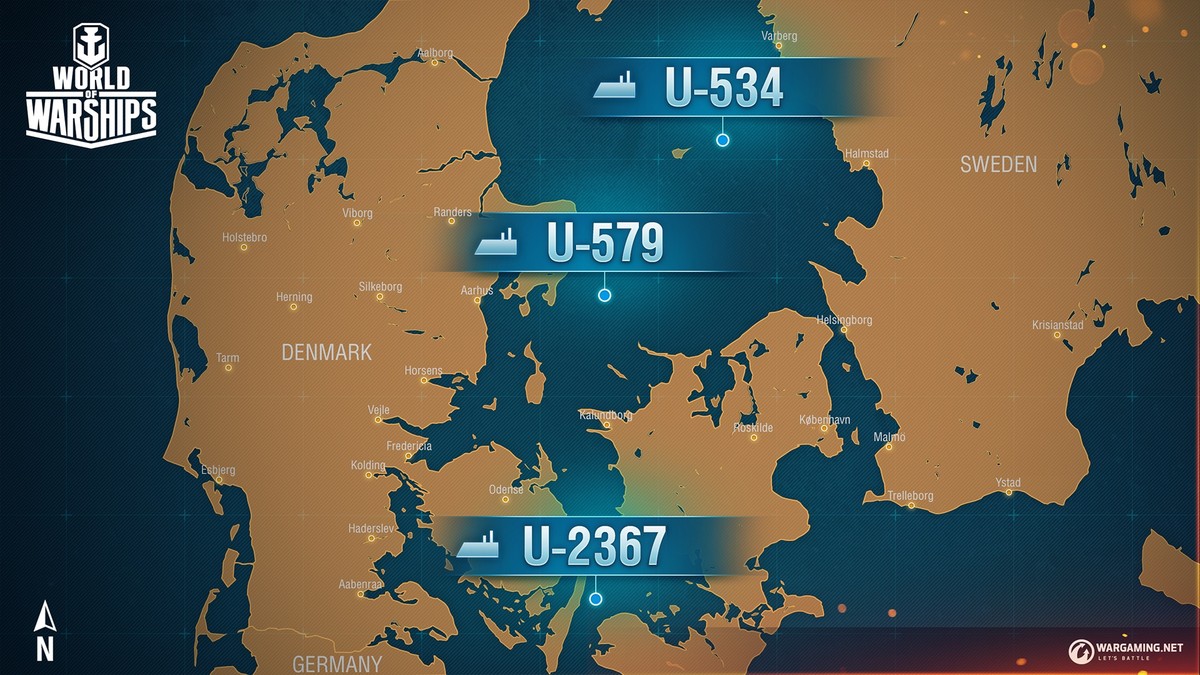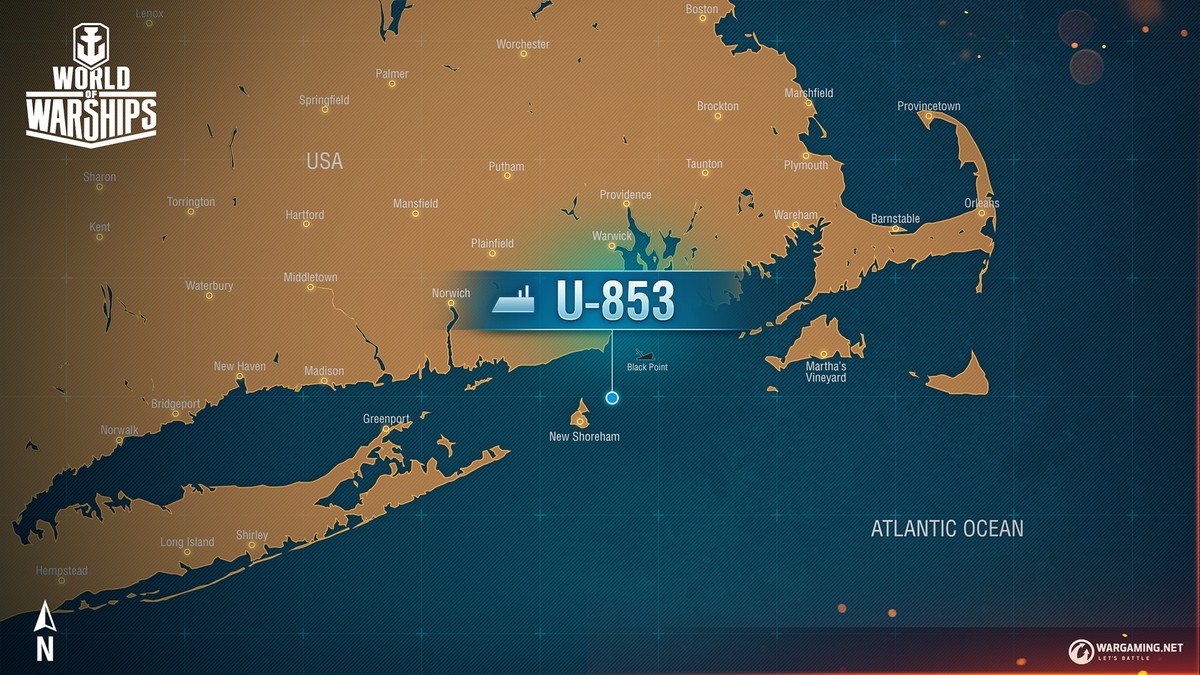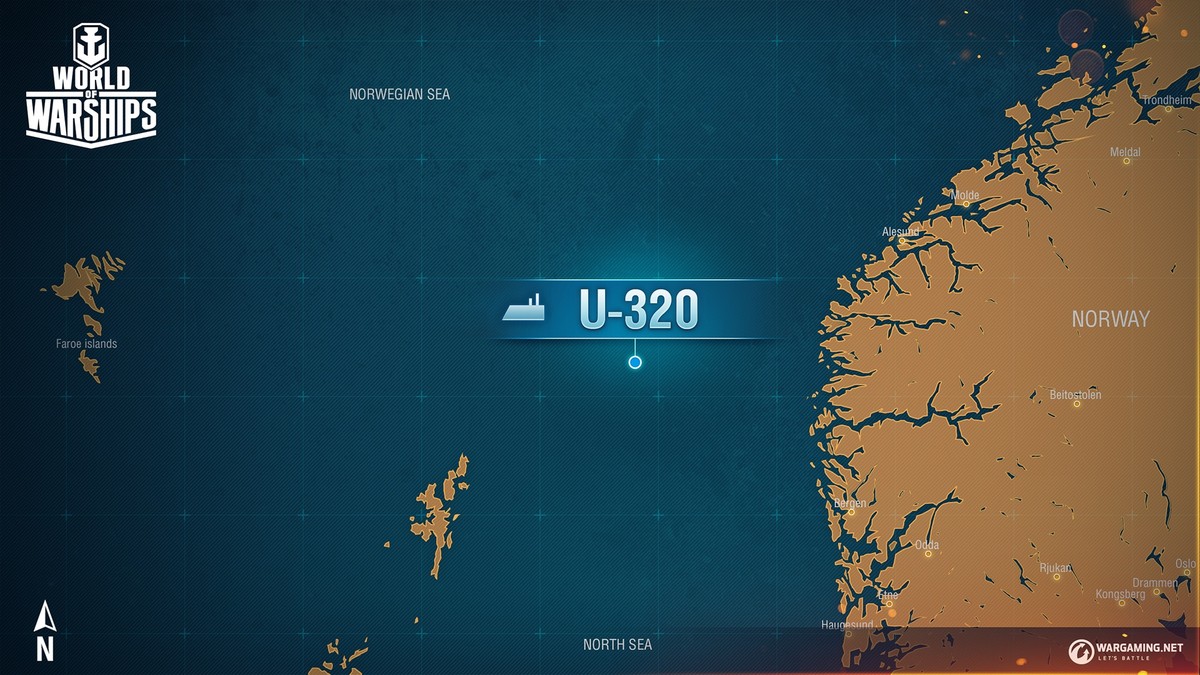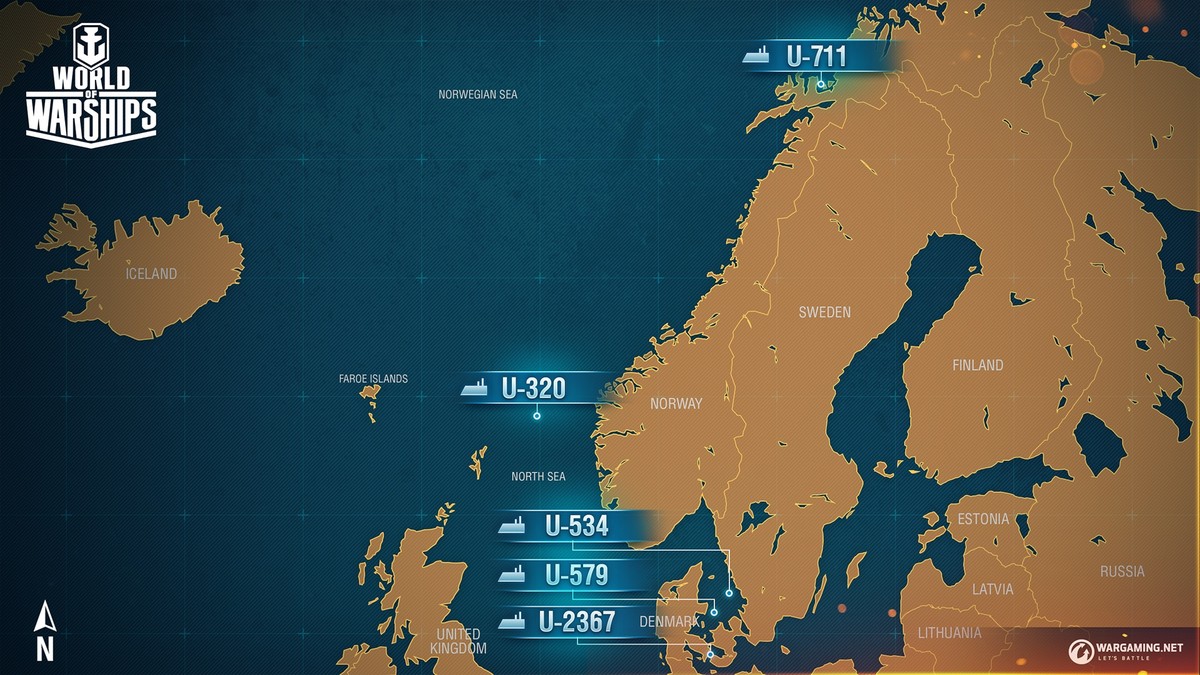Source – eu portal
The destruction of Nazi Germany’s submarine fleet was one of the most important outcomes of World War II. In the early days of May 1945, submarine warfare in the European and Atlantic waters was coming to an end.
On April 29, a fierce battle ensued in the Barents Sea between German U-boats and the escort forces of Convoy RA-66. At about 10pm, a Type VIIC U-boat U-286, commanded by Oberleutnant Willi Dietrich, fired a torpedo at HMS Goodall, causing the British frigate to sink just 7 miles off one of the Soviet ports—the last torrid success of Nazi submariners in the North. That very night, the submarine was destroyed.
As early as May 1, the Northern Fleet commander, Admiral Arseniy Golovko, received a radiogram from the Navy Main Staff in Moscow with instructions for the surrender of German submarines amid expectations of Germany’s capitulation: “All U-boats currently at sea must surface and fly a black flag or pennant; All crew are to be lined up on the upper deck. U-boats are to clearly transmit their position to our onshore station using the 500 kHz (600 m) frequency. At night, U-boats are to have their lights on. U-boats located in the operational area of our fleet are to proceed to the base clearly indicated to them by radio.”
On May 2, 1945, Berlin fell, and on May 4, Grand Admiral Karl Dönitz, the new head of the falling Third Reich, signed the partial surrender of German forces operating in the North of Germany to the British forces. That same day, the following radiogram was sent to the commanders of all U-boats currently at sea: “ATTENTION ALL U-BOATS. CEASE-FIRE AT ONCE. STOP ALL HOSTILE ACTION AGAINST ALLIED SHIPPING. DÖNITZ.” In that moment, submarine warfare formally ended.
However, not all of the 64 U-boats at sea received the order properly or were willing to comply; some of them continued to sink allied ships until May 7. But the Allies responded in kind.
The last U-boat sunk by warships of the Royal Navy
The day that the cease on underwater hostilities was announced was deadly for four German U-boats. Only one of them, which had engaged in active operations since September 1942 under her long-time commander Hans-Günther Lange, perished in combat. The Type VIIC U-711 U-boat spent more than 300 days at sea, taking part in 12 combat missions, but made history as the last ‘U-boot’ sunk by the Royal Navy Fleet Air Arm during World War II. ‘Avengers’ and ‘Wildcats’ operating off British escort aircraft carriers Searcher, Trumpeter and Queen attacked U–711 in a Norwegian fjord near Harstad when she approached Black Watch, a depot vessel. Both ships were also sunk.
A Battle in the Kattegat Strait
On May 5, the Kriegsmarine submarine forces, which were formally ordered to cease all action, lost three more U-boats. Truth be told, U–2367, a Type XXIII U-boat, was not, in fact, lost in action. She went down after a collision with an unknown German submarine. At the same time, the Type IXC U–534 U-boat that had, by that time, completed three unsuccessful raids, continued to fight in the strait of Kattegat for an entire battle: the first British ‘Liberator’ to attack the U-boat was knocked down by her AA gunners, but the second one delivered a successful hit. Except for three dead submariners, the U-boat’s crew and the only survivor of a crew of six aviators aboard the bomber plane were pulled out of the water by rescuers from the nearby Danish lighthouse. Just four hours later, another ‘Liberator’ sank U–579 (Type VIIC) in that same strait. Although this U-boat entered service on July 17, 1941, she had served as a training vessel throughout the war and her crew hadn’t suffered any losses until that fateful day in May, which claimed the lives of nearly half of her submariners.
The last anti-submarine operation involving surface warships
On May 6, two U-boats whose commanders had likely failed to respond to Dönitz’s radiogram found themselves in the firing line of the U.S. anti-submarine forces operating in the Atlantic. To the south-west of Newfoundland, escort destroyer Farquhar sank U–881, a Type IXC U-boat, with all her crew, during the U-boat’s first mission, which started as she set out to sea on March 1. In the morning, off the coast of Rhode Island and to the south of Newport, escort destroyer Atherton and patrol frigate Moberly sank (with all crew) U–853, a Type IXC U-boat that been in three combat raids since mid-1943.
Earlier, on April 23, near Portland, this U-boat had destroyed patrol ship PE–56 with most of her crew. On May 5, when exiting the Newport harbor, U–853 sank Black Point, a transport ship. The motives behind the actions of U–853’s 24-year-old commander Oberleutnant Helmut Fromsdorf will remain unknown, but Black Point was the last U.S. ship to perish from an attack by a German U-boat, and the strike against the U-boat herself turned out to be the last anti-submarine operation by surface warships during World War II.
Who was last?
The final German U-boat to be sunk is believed to be U–320. On May 7, she was badly damaged by the British flying boat Catalina at sea, and scuttled the next day off a small island to the west of Bergen (Norway). During interrogations, the German submariners told the British that their boat had been sunk by an air strike, apparently to avoid punishment for the destruction of their ship at their own hands after Germany had signed an unconditional surrender on May 7. But the truth was revealed, though much later.
Outcome
As of May 8, after all U-boat commanders of the Kriegsmarine were informed about the conditions of surrender, 12 submarines still remained in English coastal waters, one U-boat operated in American waters, 16 U-boats were en route to their bases, and 21 were heading out for a hunt. The whereabouts of another six submarines are still unknown and the remaining operational submarines were in ports: 84 in Norway; one in France; six in the Far East; six in Germany; and four in Denmark. All of them surrendered to the Allies at sea, and were transferred to the ports of Great Britain, the USA, and Canada, or captured afloat in their bases, with the exception of two U-boats that escaped to be interned in Argentina and another one interned by Spain in 1943.
This is how the history of the Kriegsmarine’s ‘wolf packs’ ended, putting an end to naval warfare. An anticipated calm settled over the seas.
La distruzione della flotta sottomarina della Germania nazista fu uno dei successi più importanti della Seconda Guerra Mondiale. Fin dai primi giorni di maggio del 1945, la guerra sottomarina nelle acque europee e nell’Atlantico iniziò a volgere al termine.
Il 29 aprile si svolse una feroce battaglia tra la scorta del Convoglio RA-66 e gli U-boot tedeschi nel Mare di Barents. Verso le 22.00, un U-boot U-286 di tipo VIIC comandato dall’Oberleutnant Willi Dietrich lanciò un siluro contro la fregata britannica HMS Goodall, facendola affondare ad appena 7 miglia dai porti sovietici: l’ultimo grande successo dei nazisti a nord. Quella stessa notte, il sottomarino venne distrutto causando la morte di tutto il suo equipaggio.
Il 1° maggio, il comandante della Flotta settentrionale, l’Ammiraglio Arseniy Golovko, ricevette un radiogramma dallo stato maggiore della Marina a Mosca con le istruzioni per la resa dei sottomarini tedeschi a seguito della capitolazione della Germania: “Tutti gli U-boot attualmente in mare devono tornare in superficie e sventolare una bandiera o uno stendardo nero. Tutti gli equipaggi si devono mettere in fila sul ponte superiore. Gli U-boot devono trasmettere in maniera inequivocabile la propria posizione alle nostre stazioni sulla costa con una frequenza a 500 kHz (600 m). Di notte dovranno mantenere accese le proprie luci. Gli U-boot situati nell’area operativa della nostra flotta devono procedere verso la base chiaramente indicata via radio.”
Il 2 maggio del 1945 Berlino cadde e, il 4 maggio, il Grandammiraglio Karl Dönitz, il nuovo capo dell’ormai morente Terzo Reich, firmò alla Gran Bretagna una resa parziale delle forze tedesche operative a nord della Germania. Lo stesso giorno, venne inviato il seguente radiogramma a tutti i comandanti di U-boot in mare: “ATTENZIONE, A TUTTI GLI U-BOAT. CESSARE IMMEDIATAMENTE IL FUOCO. INTERROMPERE TUTTE LE OSTILITÀ’ NEI CONFRONTI DELLE NAVI ALLEATE. DÖNITZ.” Da quel momento, la guerra sottomarina terminò ufficialmente.
Tuttavia, non tutti i 64 U-boot ancora in mare ricevettero correttamente l’ordine o acconsentirono alla resa: alcuni continuarono ad affondare navi alleate fino al 7 maggio. La risposta degli Alleati non tardò ad arrivare.
L’ultimo U-boot affondato dalla Royal Navy
Il giorno della dichiarazione della fine delle ostilità della guerra sottomarina si rivelò letale per quattro U-boot tedeschi. Solo uno di questi, operativo dal settembre 1942 sotto il comando di Hans-Günther Lange, fu affondato in zona di combattimento. L’U-boot U-711 di tipo VIIC era in mare da oltre trecento giorni e aveva preso parte a 12 missioni di combattimento. Rimase nella storia in quanto ultimo U-boot affondato dalla Royal Navy Fleet Air Arm durante la Seconda Guerra Mondiale. Avengers e Wildcats lanciati dalle portaerei di scorta britanniche Searcher, Trumpeter e Queen attaccarono l’U-711 in un fiordo norvegese vicino a Harstad mentre si stava avvicinando alla nave d’appoggio Black Watch. Entrambe le imbarcazioni furono affondate.
Una battaglia nello stretto di Kattegat
Il 5 maggio, i sommergibili della Kriegsmarine, che avevano ricevuto l’ordine formale di interrompere le ostilità, persero altre tre unità. A dire la verità, l’U-2367, un U-boot di tipo XXIII che era entrato in servizio poco tempo prima, non fu distrutto durante un’azione di combattimento: affondò dopo una collisione con un sottomarino tedesco sconosciuto. Nello stesso momento, un U-boot di tipo IXC, che per allora aveva portato a termine tre raid infruttuosi, continuò a opporre resistenza nello stretto del Kattegat. Il primo Liberator che attaccò l’U-boot fu abbattuto dal fuoco contraereo, ma il secondo centrò il bersaglio. Ad eccezione di tre marinai morti, l’equipaggio dell’U-boot e l’unico sopravvissuto dell’equipaggio composto da 6 membri del Liberator, furono messi in salvo da soccorritori giunti dal vicino faro in territorio danese. Tutto ciò avvenne alle 12:45. Solo quattro ore più tardi, un altro Liberator affondò l’U–579 (tipo VIIC) nello stesso stretto. Questo U-boot era entrato in servizio il 17 luglio 1941 e, per tutta la durata della guerra, era stato impiegato per addestrare i marinai. Prima di quello sfortunato giorno di maggio non aveva mai subito delle perdite. Quel giorno persero la vita quasi metà dei componenti del suo equipaggio.
L’ultima operazione anti-sommergibile condotta da imbarcazioni di superficie
Il 6 maggio, due U-boot i cui capitani, per qualche motivo, non avevano risposto alla comunicazione radio di Dönitz, si ritrovarono ad affrontare le unità antisommergibile statunitensi operanti nell’Atlantico. A sud-ovest del Newfoundland il cacciatorpediniere di scorta Farquhar affondò l’U–881, un U-boot di tipo IXC, con tutto il suo equipaggio. Questo sommergibile aveva iniziato il 1° marzo la sua prima missione operativa. Durante la mattina, al largo della costa del Rhode Island, a sud di Newport, il cacciatorpediniere di scorta Atherton e la fregata Moberly affondarono l’U-853 (U-boot di tipo IXC) e tutto il suo equipaggio. Tra il 1943 e il 1945 avevano portato a termine tre raid.
Precedentemente, il 23 aprile, vicino a Portland, questo U-boot aveva affondato la nave da pattuglia PE-56. Durante l’affondamento gran parte dell’equipaggio della nave perse la vita. Il 5 maggio, l’U-853 affondò la nave cargo Black Point mentre usciva dal porto di Newport. Le motivazioni che spinsero il ventiquattrenne capitano dell’U-853, tenente Helmut Fromsdorf, a condurre questo attacco rimarranno sconosciute, ma la Black Point fu l’ultima nave statunitense a perire a causa di un attacco di un sommergibile tedesco. L’affondamento di questo U-boot fu l’ultima operazione anti-sommergibile condotta da imbarcazioni di superficie durante la Seconda Guerra Mondiale.
Chi rimase per ultimo?
Si pensa che l’ultimo U-boot tedesco andato perso sia l’U-320. Il 7 maggio fu pesantemente danneggiato in mare da un idrovolante britannico Catalina, poi autoaffondato il giorno dopo al largo di una piccola isola a ovest di Bergen (Norvegia). Durante le indagini, i marinai tedeschi del sottomarino confessarono agli inglesi che la loro nave fu affondata da un attacco aereo, apparentemente per evitare di essere puniti per l’autodistruzione della propria nave dopo la dopo la firma tedesca della resa incondizionata del 7 maggio. La verità fu rivelata solo molto più tardi.
Esito
L’8 maggio, dopo che tutti i comandanti di U-boot dell’ormai arresa Kriegsmarine furono informati sulle condizioni di resa, 12 sottomarini rimasero comunque nelle acque costiere inglesi, un U-boot continuava ad operare nelle acque americane, 15 U-boot erano in rotta verso le loro basi e 21 erano ancora in caccia. Le posizioni di sei sottomarini sono ancora sconosciute e i sottomarini operativi rimanenti erano nei porti: 84 in Norvegia, uno in Francia, sei nel lontano Oriente, sei in Germania e quattro in Danimarca. Tutti i comandanti cedettero le loro navi agli Alleati, che furono trasferite ai porti di Gran Bretagna, USA, Canada, o catturate nelle loro basi, con l’eccezione di due U-boot che scapparono per poi essere confinati uno in Argentina e uno in Spagna nel 1943.
In questo modo si concluse la storia dei “branchi di squali” della Kriegsmarine, mettendo la parola fine alla guerra navale. Finalmente, una tanto attesa calma raggiunse i mari.

